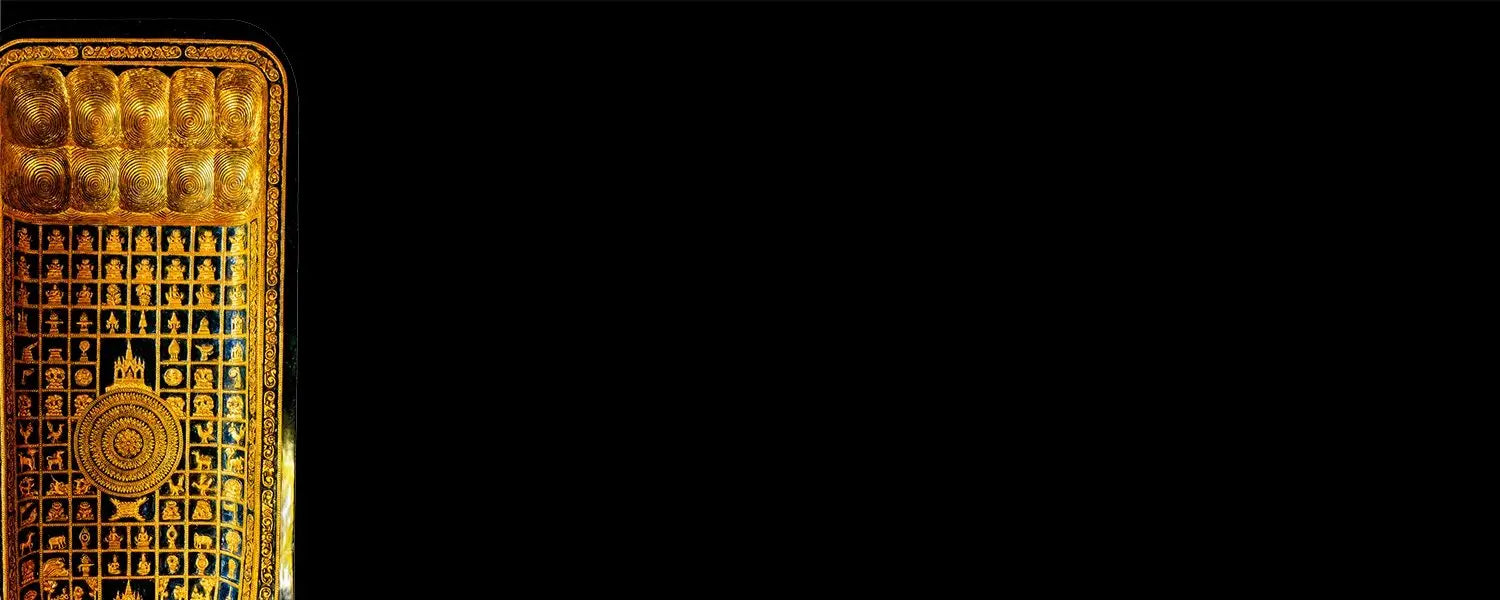FOOTPRINTS OF THE BUDDHA IN BUDDHISM
The Buddha's footprint
In early examples of Indian Buddhist art, Sakyamuni is not depicted in human form, but his presence is implied by symbols such as the lotus, a parasol, his throne or his footprints.
These footprints of early Buddhist art are found throughout Asia, often in narrative reliefs depicting key episodes in the life of the Buddha and thus indicating his personal presence.
These footprints are often engraved with various Buddhist symbols. One of the most frequently used symbols in early Buddhism was the Swastikah, which means good fortune, luck and well-being.
When placed flat, the Buddha footprint is positioned with the toes pointing toward the worshipers, as if the Buddha was facing them, and when displayed on walls, their toes point downward.
Footprints, at Gokurakuji Temple (Dec. 1989)
Concerning the virtue of representing the Buddha's footprints, there is a text cited from "Buddha-Dhyâna-Samâdhi-Sâgara-Sûtra":
“ Meanwhile, Shaka (Sâkyamuni) raised his foot. . . . When the Buddha raised his foot, everyone could perceive that, from beneath his feet, the Buddha radiated a light having the appearance of a wheel with a thousand spokes. And all those who saw this radiance became strictly upright, and obtained supreme illumination. "
And Shaka said: " Whoever sees the sign on the sole of my foot, will be purified from all his faults. Whoever sees the sign after my death will be delivered from all the harmful consequences of all his errors."
FOOTPRINTS OF THE BUDDHA IN ANCIENT BUDDHIST ART
For four centuries after death of Gautama (around 483 BC), legends and facts about the Buddha historical , his dialogues and words, were preserved only in the memories of monks and disciples. There were no written documents or artistic representations.
Like the Hindu Brahmins, the early Buddhists believed that religious knowledge was too sacred to be written, too sacred to be engraved in stone or wood.
In these early years, when overt representations of the image of Buddha were taboo, the main artistic vehicle for symbolizing the presence of the Buddha was to show the "footprint" of the Buddha. Buddha.
These imprints of early Buddhist artwork can be found throughout Asia, often in narrative reliefs describing key episodes in the Buddha's life , and thus indicating one's personal presence.
These prints are often engraved with various Buddhist symbols. One of the most frequently used symbols in early Buddhism was the Svastikah (oriented to the left 卍 or to the right 卐).
Many centuries later, in the 20th century, it was unfortunately adopted by Nazi Germany, which used it (the swastika) on its flag and armbands.











































